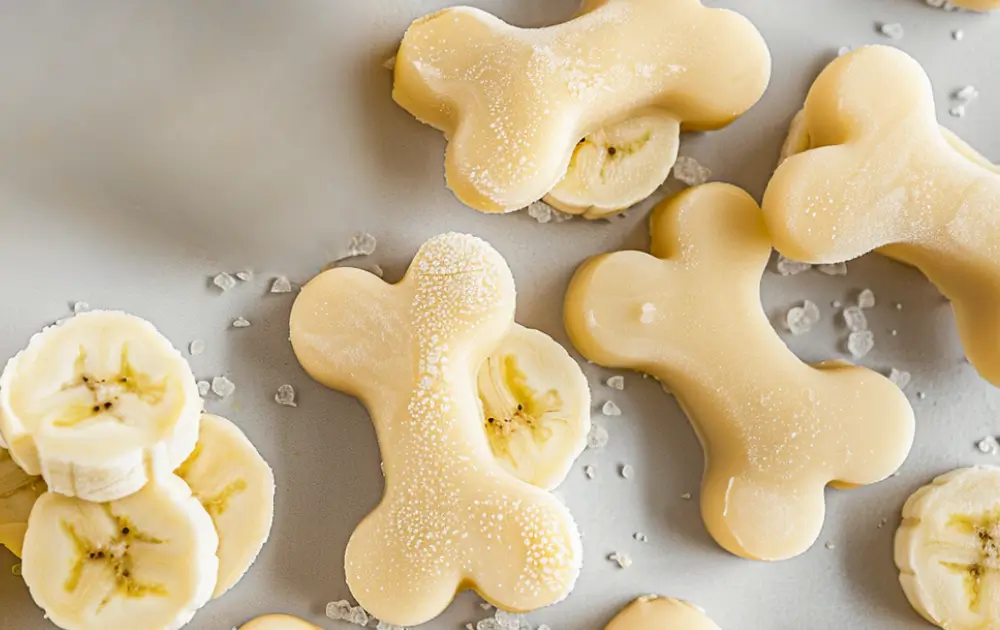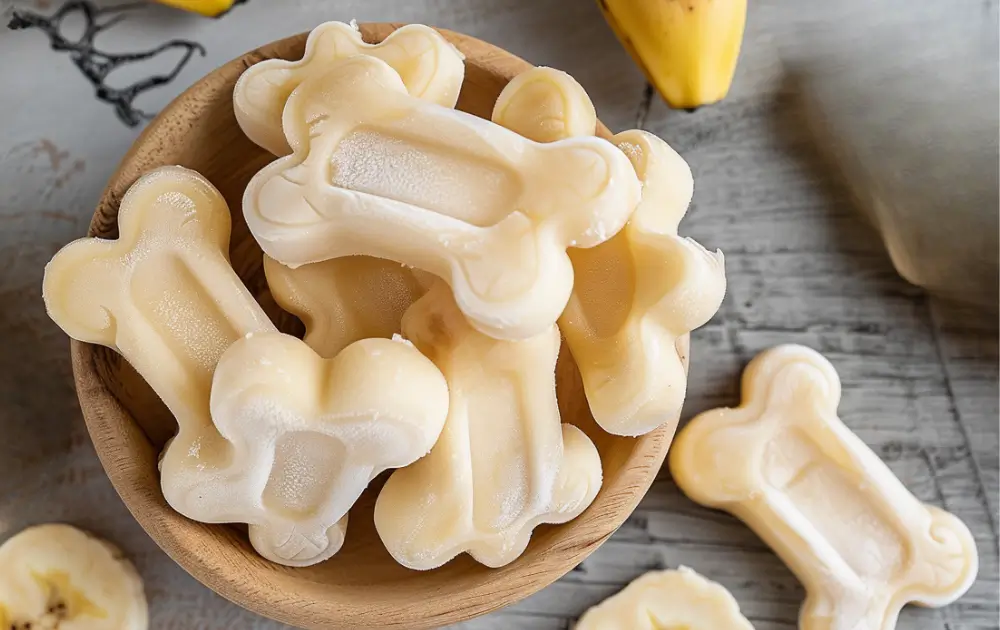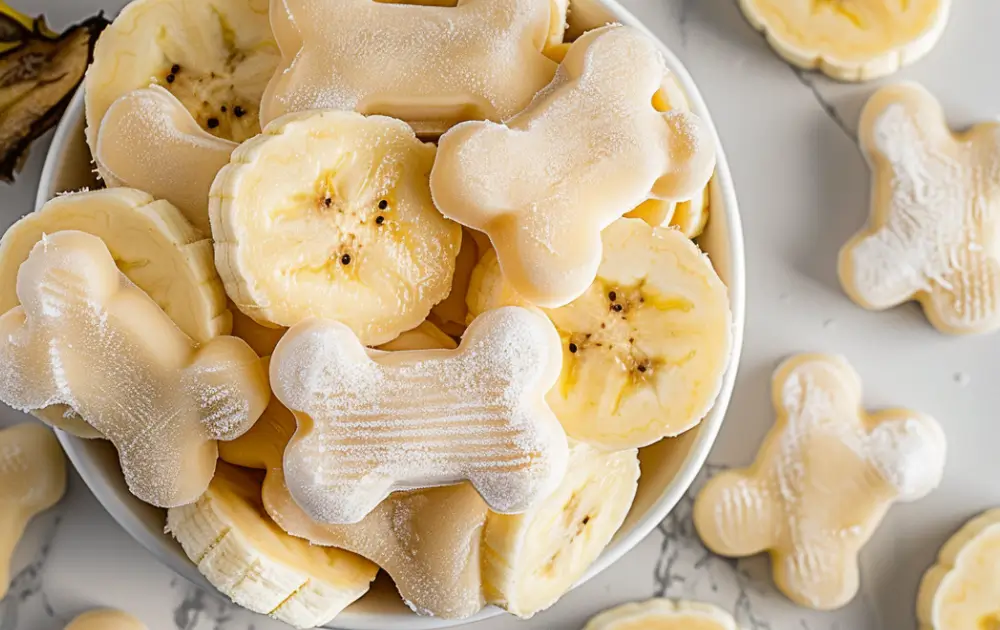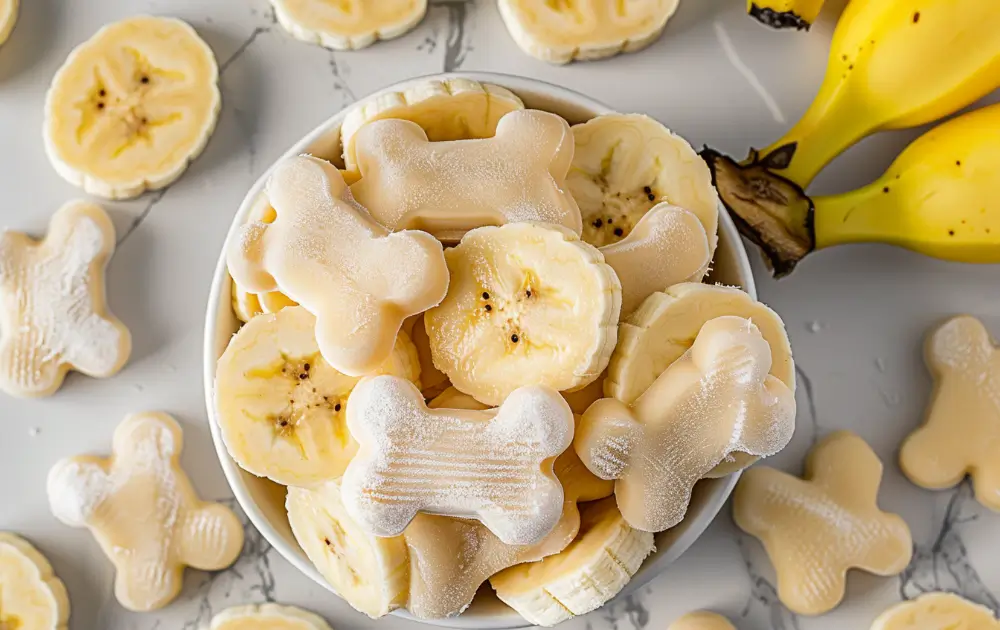How to Make Homemade Dog Ice Cream for Your Furry Friend
Introduction
Dog Ice Cream is a delightful treat specifically formulated for dogs, providing a safe and tasty way to cool down on hot days. Made with dog-friendly ingredients like bananas, peanut butter, and plain or vanilla yogurt, this homemade treat is not only delicious but also nutritious. Unlike regular ice cream, which may contain ingredients harmful to dogs such as xylitol or excessive sugar, this recipe ensures a pet-safe indulgence that dogs can enjoy without any health risks.
Print
Dog Ice Cream
- Total Time: 4 hours
- Yield: 12
Description
Dog Ice Cream is a delicious and safe frozen treat specifically formulated for dogs, made from pet-friendly ingredients such as bananas, peanut butter, and yogurt. This tasty treat helps cool down your pet during hot days while providing a nutritious snack.
Ingredients
Instructions
Notes
- Ensure that the peanut butter is free from xylitol, which is toxic to dogs.
- If your dog is lactose intolerant, consider using a lactose-free yogurt or a suitable non-dairy alternative.
- Always introduce new treats into your dog’s diet gradually to monitor for any digestive upsets or allergies.
- Prep Time: 10 minutes
- Category: Dog Treat
- Method: Freezing
- Cuisine: Pet Food
Nutrition
- Calories: 45
- Sugar: 2g (natural sugars from the banana and yogurt)
- Sodium: 20mg
- Fat: 2.5g
- Carbohydrates: 4g
- Fiber: 0.5g
- Protein: 2g
- Cholesterol: 1mg
Frequently Asked Questions about Dog Ice Cream
- Is Dog Ice Cream safe for all dogs to eat? Yes, Dog Ice Cream is safe for most dogs as it’s made with pet-friendly ingredients. However, always introduce any new treat into your dog’s diet gradually to monitor for any adverse reactions.
- Can I use regular peanut butter in Dog Ice Cream? Use only unsalted and unsweetened peanut butter that does not contain xylitol, as xylitol is extremely toxic to dogs.
- How often can my dog have Dog Ice Cream? While Dog Ice Cream is a safe treat, it should be given in moderation, especially if your dog is sensitive to dairy or has a weight issue. It’s best as an occasional treat rather than a daily part of their diet.
- Can puppies eat Dog Ice Cream? Puppies can eat Dog Ice Cream, but it’s best to wait until they are at least two months old and are eating solid food regularly. Always check with your vet first to ensure it’s suitable for your puppy.
- Can I make Dog Ice Cream without yogurt if my dog is lactose intolerant? Absolutely! You can substitute yogurt with lactose-free yogurt or a suitable dairy-free alternative like coconut milk to make sure it’s easier on your dog’s stomach.
Ingredients and Health Benefits
The ingredients used in Dog Ice Cream are carefully chosen to be both enjoyable and beneficial for dogs. Bananas are a great source of potassium, vitamins, fiber, and copper. They are low in cholesterol and sodium but high in flavor, making them an excellent base for dog treats. Peanut butter provides protein and healthy fats, though it’s important to use unsweetened and unsalted peanut butter that does not contain xylitol. Yogurt is an excellent source of calcium and protein and can aid in digestion, but should always be plain or naturally sweetened to avoid any artificial sweeteners or excessive sugar.
Preparation Tips
Preparing Dog Ice Cream is simple and requires minimal effort. Start by mashing one or two ripe bananas in a bowl until smooth. Mix in a few tablespoons of peanut butter and plain or vanilla yogurt until well combined. The mixture can then be spooned into ice cube trays or small freezer-safe containers. Freeze the trays for several hours until the mixture is solid. Ensure the peanut butter is free from xylitol and the yogurt is low in sugar and free from artificial sweeteners before using.
Serving Suggestions
To serve Dog Ice Cream, simply pop out a few frozen treats and let your dog enjoy them under supervision. These treats are particularly refreshing after outdoor activities or on a warm day. They can also be used as a special reward during training sessions. Since these treats are frozen, they should be offered in moderation to prevent stomach upset, especially in smaller dogs or those with sensitive digestive systems.
Customization Ideas
The basic recipe for Dog Ice Cream is versatile and can be customized to include other dog-safe ingredients. Adding pureed pumpkin, diced apples (without the seeds), or blueberries can provide additional vitamins and flavors. For dogs with a taste for vegetables, blending in some steamed carrots or sweet potato can create a new texture and flavor profile. Always consult with a veterinarian before introducing new ingredients into your dog’s diet to ensure they are safe and appropriate for your pet.

Storing and Shelf Life
Proper storage is crucial for maintaining the quality and safety of homemade Dog Ice Cream. Once frozen, the treats should be kept in an airtight container or a sealed bag to prevent freezer burn and odor absorption from other foods. Dog Ice Cream can typically be stored in the freezer for up to three months. It’s important to label the storage container with the preparation date so you can keep track of its freshness. Always inspect the treats for any signs of freezer burn or odor changes before serving to your pet.
Nutritional Considerations
While Dog Ice Cream is a healthy treat option, it’s important to consider its place within your pet’s overall diet. Treats should not make up more than 10% of a dog’s daily caloric intake to avoid weight gain and nutritional imbalances. The ingredients like banana and peanut butter, although healthy, are high in calories and should be given in moderation, particularly to smaller dogs or those prone to obesity. Always choose yogurt that is low in fat and free from any artificial sweeteners, as these can be harmful to dogs.
Engaging with Your Pet During Treat Time
Using Dog Ice Cream as a way to further engage with your pet can enhance the bonding experience. Treat time can be used as an opportunity for training or playing games that stimulate your dog mentally and physically. For example, hiding treats for a “find it” game or using them as rewards during agility training can make learning fun and rewarding. Additionally, interacting with your pet during treat time allows you to monitor how well they tolerate the cold treats, which is especially important for dogs with sensitive teeth or gums.
Health Safety Tips
When preparing and serving Dog Ice Cream, it’s essential to follow certain safety tips to ensure the well-being of your pet. Always check the ingredients list on peanut butter to confirm it does not contain xylitol, a common sweetener that is toxic to dogs. Additionally, introducing any new food into your pet’s diet should be done gradually to monitor for any adverse reactions, such as allergies or gastrointestinal upset. If your dog has specific health issues, consult your veterinarian before adding new types of treats to their diet.
Creative Presentation Ideas
Presenting Dog Ice Cream in a fun and appealing way can make treat time exciting for your pet. Consider using paw print or bone-shaped molds for freezing the treats to make them visually appealing to both you and your pet. On hot days, adding a frozen treat to a puzzle feeder can provide mental stimulation as your dog works to retrieve their cool reward. For a special occasion like a dog’s birthday, small amounts of Dog Ice Cream can be layered with dog-safe fruits or kibbles to create a “cake,” making the celebration even more festive.

Seasonal Adaptations for Dog Ice Cream
Tailor Dog Ice Cream to the seasons to keep your pet intrigued all year round. In the fall, incorporate pumpkin or apple into the mix, which are both festive and beneficial for your dog’s digestion. Winter might call for adding a little cinnamon (in very small amounts, as it’s safe for dogs in moderation) to the recipe for a warming touch. During the spring, fresh berries can make a colorful and antioxidant-rich addition. In the summer, sticking to lighter, hydrating ingredients like watermelon (seedless and rind removed) and cucumber can help keep your dog cool and hydrated.
Promoting Dog Health with Nutritious Treats
Dog Ice Cream can be more than just a treat; it can be a part of promoting your dog’s health. Ingredients like yogurt are great for your dog’s gut health due to their probiotics. Adding ingredients like flaxseed oil or coconut oil can provide essential fatty acids that promote a shiny coat and healthy skin. Using this homemade treat to incorporate supplements or medications can be an effective way to ensure your dog consumes their necessary health aids, making it beneficial and enjoyable.
Community Engagement with Dog-Friendly Events
Organizing or participating in dog-friendly events with your homemade Dog Ice Cream can foster community engagement and provide socialization opportunities for pets. Events like “Yappy Hours” or dog meetups at local parks are perfect occasions to introduce your pet treats to a larger audience. Offering samples during such gatherings can also be a great way to share your recipes with other dog owners, potentially leading to a hobby business. It’s also a lovely way to receive direct feedback on new flavor combinations or treat ideas.
Eco-Friendly Practices in Dog Treat Preparation
Implementing eco-friendly practices when making Dog Ice Cream can have a positive impact on the environment. Opt for organic ingredients to support sustainable farming practices. Reuse plastic containers or invest in silicone molds for freezing the ice cream, reducing waste. Purchasing ingredients in bulk can minimize packaging waste. Sharing these practices through social media or community groups can inspire other pet owners to consider more sustainable options for their pet care routines.
Integrating Dog Ice Cream into Daily Training Routines
Using Dog Ice Cream as a reward during daily training routines can enhance your dog’s learning experience. The high-value nature of this frozen treat makes it an excellent motivator for dogs during training sessions, especially in warm weather. It can be used to reinforce good behavior or successful completion of training exercises. Breaking the treats into smaller pieces can prevent overfeeding while keeping your dog engaged and interested in the training process. This integration not only makes learning fun but also provides a refreshing reward for your dog’s hard work.

Innovative Marketing Strategies for Homemade Dog Treats
To effectively market homemade Dog Ice Cream, consider creating attractive packaging and branding that emphasizes the natural and safe ingredients used. Launching a dedicated website or social media page for your dog treats can help reach a wider audience. Utilizing local pet events and farmer’s markets to showcase your products allows potential customers to sample the treats and see their pets’ reactions firsthand, which can be a powerful selling point. Offering promotions or discounts to first-time buyers can also encourage hesitant customers to try your treats. Additionally, partnering with local pet stores or vet clinics to distribute samples can help establish credibility and trust in your brand.
Understanding Canine Nutrition
When crafting recipes like Dog Ice Cream, a basic understanding of canine nutrition is essential. It’s important to know which foods are safe for dogs and which should be avoided. Educate yourself on the nutritional needs of different dog breeds and ages to ensure your treats can be safely enjoyed by a wide range of dogs. Providing this nutritional information in your marketing materials can help inform pet owners and show that you prioritize the health and well-being of their pets. Offering variations of your recipe for specific dietary needs, such as low-calorie or allergen-free options, can also appeal to a broader customer base.
Building a Community Around Dog Wellness
Creating a community around dog wellness through your treats can foster deeper engagement with your customers. Organize online forums or social media groups where dog owners can discuss pet care tips, share photos of their pets enjoying your treats, and provide feedback on your products. Hosting webinars or live Q&A sessions with experts on dog health and nutrition can add value to your community. These activities not only strengthen the relationship with your customers but also position your brand as an authority in dog health and wellness.
Leveraging Customer Feedback for Product Improvement
Actively seeking and leveraging customer feedback is crucial for refining Dog Ice Cream recipes and developing new products. Encourage customers to share their pets’ reactions and suggestions on flavor or texture improvements. Use surveys or polls on social media to gather opinions on potential new flavors or ingredients. Analyzing this feedback can provide valuable insights into customer preferences and help identify trends that could inform future product development. This approach ensures that your treats remain aligned with customer desires and market demands.
Promoting Dog Health through Educational Content
Providing educational content related to dog health and the benefits of your Dog Ice Cream can enhance your brand’s value. Publish blog posts, videos, or infographics that detail how each ingredient in your treats benefits canine health. Offer practical advice on maintaining a healthy diet for dogs, including portion control and balancing treats with regular meals. By educating your audience, you not only increase the appeal of your products but also help pet owners make informed decisions about their dog’s nutrition, fostering trust and loyalty to your brand.
Conclusion
Dog Ice Cream made with banana, peanut butter, and yogurt is a delightful treat that can help cool down your pet on hot days while providing them with a tasty and safe snack. It’s easy to make at home with just a few ingredients, and you can customize the recipe to suit your dog’s taste preferences and dietary needs. This treat not only enhances bonding time as you prepare and offer it, but also enriches your pet’s diet with healthy ingredients. As with any treat, moderation is key to maintaining a balanced diet and ensuring your pet’s health. Always consult with a veterinarian if you’re unsure about introducing new treats into your dog’s diet, especially if they have specific health issues or dietary restrictions.

